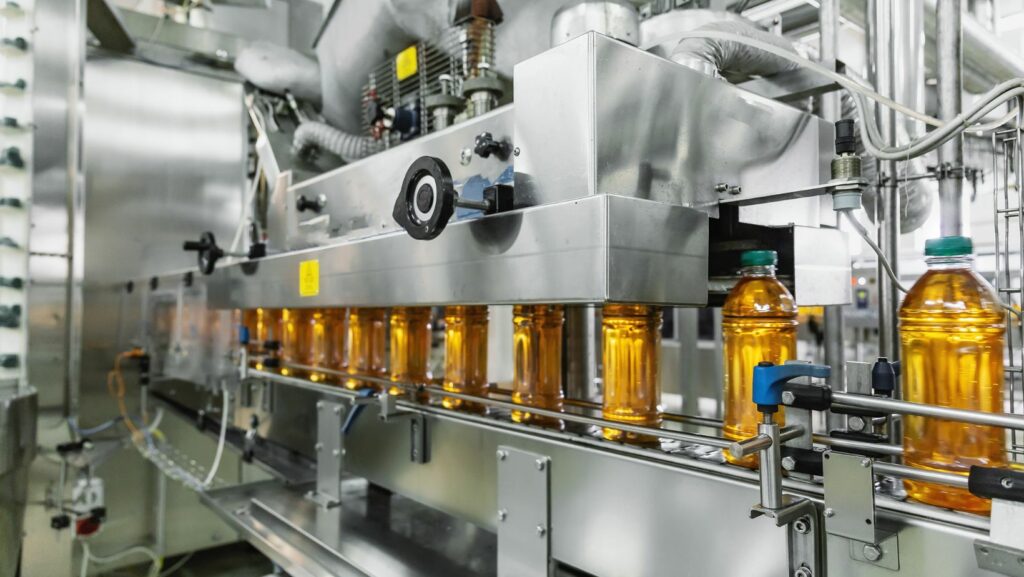Food and Beverage Industry Trends
In the Food and Beverage Industry Trends, there’s a notable surge in the popularity of plant-based products. Consumers are increasingly opting for plant-derived alternatives to meat, dairy, and other traditional animal-based products. This shift is driven by concerns over health, sustainability, and animal welfare. Brands are innovating to meet this demand by introducing a wide array of plant-based options, ranging from plant-based burgers and dairy-free milk to vegan snacks and desserts.

The rising preference for plant-based products is reshaping the industry, prompting companies to expand their plant-based product lines and invest in research and development to create new, innovative offerings.
Sustainability and ethical sourcing practices are becoming integral to the operations of food and beverage companies. Consumers are more conscious of the environmental impact of their food choices and are demanding greater transparency from brands regarding sourcing and production processes. As a result, businesses are adopting sustainable practices such as reducing food waste, utilizing eco-friendly packaging, and supporting fair trade initiatives. By prioritizing sustainability and ethical sourcing, companies can enhance their brand reputation, appeal to a socially-conscious consumer base, and contribute to positive environmental and social outcomes.
The Impact of Technology on Food Production
The advancement of technology has significantly transformed the landscape of food production, revolutionizing the way companies operate and meet consumer demands. Two key areas where technology has made a profound impact on the Food and Beverage Industry Trends are automation in food processing and the integration of artificial intelligence (AI) in customer preference analysis.
Automation has revolutionized food processing by streamlining operations, improving efficiency, and ensuring consistency in quality. Automated systems and robotics have enabled food manufacturers to optimize production processes, reduce waste, and enhance food safety standards.

From automated packaging and labeling to robotic arms in production lines, automation has increased the speed and accuracy of tasks while minimizing human error.
Artificial intelligence plays a pivotal role in understanding and predicting consumer preferences in the Food and Beverage Industry Trends. AI algorithms analyze vast amounts of data from various sources such as social media, online surveys, and purchasing patterns to discern trends and patterns in consumer behavior. By leveraging AI, companies can tailor their products to meet specific consumer needs, optimize marketing strategies, and enhance customer engagement. AI-driven insights enable businesses to stay ahead of market trends and develop products that resonate with their target audience.
Technology, through automation and artificial intelligence, continues to shape the food production landscape, empowering companies to innovate, meet consumer demands, and drive growth in the ever-evolving Food and Beverage Industry Trends.
Consumer Preferences Shifting the Market
Building on the rise of plant-based products in response to health and sustainability concerns, companies in the Food and Beverage Industry Trends are now focusing on adapting to evolving consumer preferences to drive market growth. Harnessing technology is a key strategy employed by these companies to stay ahead in the competitive market landscape.

The increasing consumer shift towards health-conscious eating habits has influenced the Food and Beverage Industry Trends significantly. More consumers are opting for nutritious and wholesome options that support their well-being. As a result, companies are investing in research and development to create products that cater to this demand. From clean labels highlighting natural ingredients to functional foods providing health benefits, the industry is witnessing a transformation towards more health-centric offerings.
With globalization connecting people from diverse cultures, there is a growing demand for global flavors in the food and beverage sector. Consumers are eager to explore new tastes and culinary experiences from around the world, prompting companies to diversify their product lines. Incorporating authentic flavors from various regions not only caters to the changing preferences of consumers but also allows companies to tap into new market segments. This trend has led to an expansion of international cuisines in mainstream food products, offering consumers a taste of different cultures without leaving their homes.



